Last week I picked up my Canon EOS 5D Mark III Digital SLR camera on the day of the launch, and I took some lenses, a fully charged battery and a CF card with me to Shinjuku, so that I could start using the camera right away. A Starbucks lunch with a table gave me enough time and a place to set up the camera and take a quick run through the menus, making sure I was shooting RAW etc, and I was ready to go.
I went to the Shinjuku Gyoen Park, where I knew the Kanzakura, a type of early flowering cherry blossom, were in bloom, and this always attracts some birds which would be a good test of the new Auto-Focus, as well as high ISO capabilities, as it wasn’t a particularly bright day. I’d been hoping for White Eyes, but when I got there I found a flock of Brown-eared Bulbuls at the main Kanzakura tree, so I set in to see how the 5D Mark III handled.
I posted the first couple of shots that we’ll look at today on my blog last week, so you may have already seen them, but lets take a look at these first, so show you how sharp the sensor is, and at high ISO’s too. Ensure that you have your browser window nice and wide, and click on the the images to view them at the full size that I posted them in, to really see the full detail.
First, here’s one of my favorite shots from the day, of the Bulbul just taking off, with a couple of blossom petals falling. This is straight out of the camera, shot handheld with a 300mm F2.8 lens and the 1.4X Extender III fitted, and using ISO 400 for 1/1000 of a second at f/5.6. Note too that this was the second of the only two shots that I was able to get as I saw the bird start to spread its wings. Had it not been for the faster frame rate of six frames per second, I’d have missed this shot.
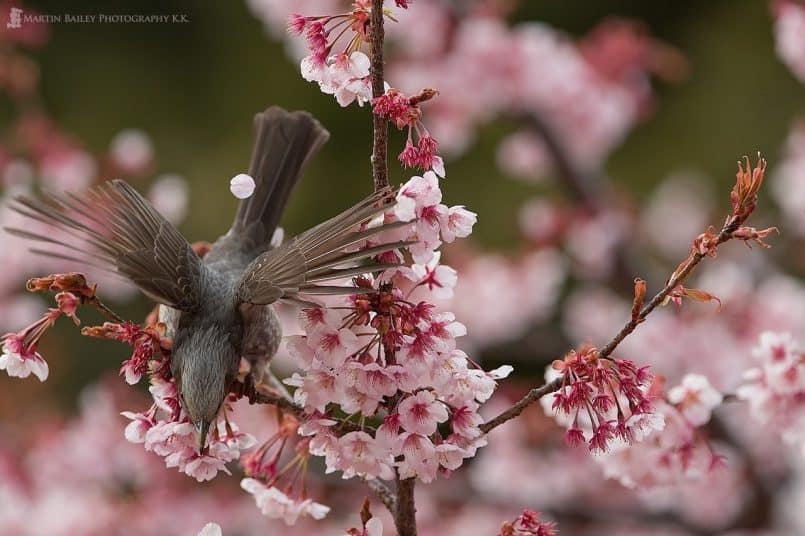
Shot with the new Canon EOS 5D Mark III – There’s about a 3% crop on the top and right side of this, for artistic reasons, but that’s all I’ve done to this image.
Here though, is a 100% crop (if viewed with the browser window wide enough) showing just the birds head and some of the blossom. You can see that the focus is spot on, right over the head, beak and extending down to the eyes, which is exactly what I wanted. And the sharpness is amazing. Of course, that was always a given but it’s nice to see such great image quality.
Just to be sure you know what I mean by straight out of camera here, for these first few images I had downloaded the Release Candidate of Adobe Camera RAW 6.7 which has support for the 5D Mark III and 1D X already. So basically these photos do have the default settings for the latest Adobe Camera RAW applied, but I have not applied any noise reduction at all. Also note that I cropped the full version of this image by about 3% along the top and right side, to clean up the right edge a bit, but that’s all I did.
5D Mark III Support in Lightroom
I did try to use Digital Photo Professional and ImageBrowser EX, that come with the camera, but that just confirmed my belief that Canon should stick to making great cameras. After confirming that Adobe’s Bridge and Photoshop combination is only slightly less painful, I found that if I convert my RAW files to DNG using the ACR 6.7 DNG Converter (also still Release Candidate as of March 27, 2012) I can then import and edit my images in Lightroom 4, which was such a relief.
Camera Controlled Exposure
Anyway, let’s get back to my first day’s photos. Although you probably know I shoot pretty much exclusively in Manual exposure mode, I was moving from shooting the birds on the outside of the tree, to going under the tree and shooting up at the birds, and there was much less light under the tree than on the top. This did of course mean that I had more backlight when under the tree, but I found it easier to deal with that with Exposure Compensation than a Manual Exposure adjustment. I know this is very different to my shooting techniques so far, but I was also trying to get a feel for the new brain in this camera, and it worked out pretty well.
For the last shot, I’d already started to try Aperture Priority, but I found myself constantly checking to ensure that I was getting a fast enough shutter speed to freeze the birds motion. Although I like a bit of wing movement in my bird shots, these Bulbuls move so fast that to keep their heads sharp too I needed to keep my shutter speed at 1/1000 of a second. Because of that though, I decided to also try Shutter Priority, setting the shutter speed to 1/1000 of a second, but I also took another leap of faith at this point, which was Auto ISO.
Although some of my recent cameras have had Auto ISO, I’ve didn’t feel comfortable using it because I otherwise shot in Manual, and allowing the camera to make decisions about the exposure would have taken control out of my hands. Now though, using Aperture and Shutter Priority, I figured I might as well take another leap of faith, and give the camera maximum flexibility in exposure, beyond changing the aperture or shutter speed, so I flicked the camera into Auto ISO mode too.
This resulted in the next image being shot at ISO 2000 with a shutter speed of 1/1000 of a second at f/4.5, and I have to tell you, I was very impressed. Although I couldn’t reproduce the high grain on my 1Ds Mark III in my tests over the last few days, at least from my experience in the field, this images seems about as clean as ISO 400 on my 1Ds Mark III, and probably comparable to ISO 640-ish, on my old 5D Mark II.
And here’s a 100% crop of the bird’s face. You can see that I nailed the focus on the bird’s eye again, and that was hand-held, at 420mm, with an aperture of f/4.5, so incredibly shallow depth of field.
I used a mix of AI Servo and One Shot auto-focus, but because I was shooting under a tree with lots of branches everywhere, it was mostly One Shot on this day, but I’ve got to tell you, I really believe that the new auto-focus system on the 5D is worth the cost of the upgrade all by itself. Almost all of the 500+ frames I shot of these birds on my first day were tack sharp, right where I wanted the focus to be. The hit ratio over the 5D Mark II is greatly improved, and it’s even better so far compared to the 1D Mark IV, which was a huge improvement over previous cameras at the time too.
Before we move on though, just to reiterate, this image (above) was shot at ISO 2000, and just look how clean it is.
How High Can You Go?
So, over the last few days, I’ve been testing the 5D Mark III in my studio, to see just how high you can safely go with the ISO before you have to start to worry about the grain. I’ll show you some example photos right after this, but to cut to the chase, I’m thinking that I can use as high as ISO 12800 without thinking about the noise at all. ISO 1600 is the new ISO 400, and ISO 6400 is the new ISO 800, of course this depends on what camera you’ve been shooting with so far, but this is how I’ve mentally remapped the new ISO to Image Quality.
With the 5D Mark II and 1D Mark IV, in low light, I would go down to ISO 1600 without worrying too much, although I’d go further if necessary. My mental limit though was 1600, but now with the 5D Mark III that point where you think for a moment, will probably be when I go past ISO 12800. When I really need to push it, I’ll still go to 25600, which is where Canon set the defaults for this camera, and depending on how I intend to use the image, I’d even 51200 if necessary.
Expanded ISO
If you want to, you can set the camera to allow you to select two Expanded ISOs, H1 and H2, which are equivalent to ISOs 51200 and 102400. I think the point that Canon set the defaults is spot on, because the image degrades quite a lot at these ISOs, but still, if you are really in need of an extra stop, H1, ISO 51200 is just about usable, especially if you are shooting for the Web or printing relatively small. ISO 102400 is probably to be avoided, but again, if a UFO lands on your lawn, and they don’t light everything up for you, then use it, and try to clean the image up later in Lightroom.
ISO Examples
OK, so let’s take a look at some photos shot through the entire ISO range. First, here are twelve shots in one stop increments from ISO 50 to ISO 102400. These have been reduced to a height of 853px for the Web, but this shows that for Web use, you can really tell no difference in the quality of the image until you reach into the Expanded ISO Range, with the two images at 51200 and 102400 at the end. Click on the first thumbnail to view the image larger, and then click the right of the image or use the arrow keys on your keyboard to move through the images.
Pretty impressive huh!? Let’s take a look a 100% crop from the above images to see how the grain really looks.
Following on from the Web sized images, these do show more grain than you might have hoped in the higher ISOs, but realistically, I still think this is pretty impressive, especially when you consider just high these ISOs are. I think you’ll agree that 12800 is almost a no-brainer, with 25600 still really quite usable and even 51200 still in the running at a push.
More on Auto ISO
So, as I said, although I know people have been using this for a while, I believe this now makes Auto ISO something that I myself will be using more moving forward, so I just wanted to note a few things with regards to the Auto ISO settings.
You might be wondering how the camera makes a decision to increase the ISO over reducing shutter speed, but you’ll be pleased to know that this is quite intelligent, and you have some control over the decision too. Firstly, you’re able to set the minimum shutter speed that you’ll go to before the camera starts to crank the ISO.
If you are in Manual mode, where you set the aperture and shutter speed, Auto ISO will adjust itself to put exposure at where the camera thinks it should be with the exposure compensation caret at zero. In Aperture Priority, or Shutter Priority, you can use Exposure Compensation as well, to increase or decrease the Exposure.
If you’ve set the Minimum Shutter Speed to Auto, the camera cleverly uses the focal length of the lens fitted, including zoom lenses, as the minimum shutter speed. This is of course automating use of the popular rule of thumb regarding shutter speeds, which makes this really quite a useful setting. For example when I have my 50mm lens fitted, shooting in low light, the camera will drop down to 1/50 and sometimes 1/40 of a second, and increase the ISO rather than going slower, until I hit the maximum ISO that I specified in the Auto ISO Range. Once I hit the maximum ISO, the shutter speed will start to drop below 1/40 of a second, as a last resort. When I use my 70-200mm lens though, the automatic minimum shutter speed increases to match the focal length I am shooting at.
If you select something other than Auto for your Minimum Shutter Speed, the camera will start to crank the ISO higher when you reach that shutter speed, but again once the ISO reaches the maximum set in the Auto ISO Range, it will start to increase the shutter past the minimum you selected. In Manual mode using Auto ISO means that you do of course lose control of the exposure, but if maintaining an absolute slowest shutter speed is more important than under-exposing your images, then it’s still useful. You can set both your Shutter Speed and Aperture, and have the Auto ISO expose you’re shots to what the camera thinks is the correct exposure, but then if it gets too dark, you’ll just get dark shots, rather than slower shutter speeds.
Gapless Microlenses and Larger Pixels
Although we gained a slight resolution boost, jumping from 21 megapixels to 22 megapixels, apparently now there are now no gaps between the microlenses that sit above the photodiodes, and larger 6.25 µm (micrometer) pixels which in turn means improved signal to noise ratio, higher dynamic range, and of course this is partly what’s behind the incredible new ISO capabilities. Basically the camera is gathering almost every bit of light that hits the sensor, which along with the new DIGIC 5+ image processor has resulted in better image quality in every way. I haven’t had time to search around to see if anyone else is talking about this, but I generally find the quality of the images coming out of this camera to be richer, deeper and simply more pleasing to look at.
Greatly Improved Auto-Focus System
I mentioned briefly earlier that the new Autofocus is deftly accurate, but let’s take a little bit more in-depth look at what’s changed.
One of the only things that I was unhappy with on the 5D Mark II was the autofocus system. My other cameras are a 1Ds Mark III and a 1D Mark IV, both with 45 point AF, and especially the 1D Mark IV, had much better AI Servo for tracking moving subjects like birds in flight. Spoilt by that somewhat, I was always disappointed by the 5D Mark II’s ability to track birds in flight, and didn’t like having to select just one of eight other AF points when I moved away from the center point, but that’s changed.
Although I haven’t shot birds in flight yet, from my tests on my first day, it’s easy to see that the new 61 Point AF system is worlds ahead of the 5D Mark II and even the 1D Mark IV with regards to accuracy. It just nailed the focus so much more often than I’ve seen until now. I always felt that AI Servo wasn’t as accurate as One Shot for focusing on even a stationary bird, but having used AI Servo for the relatively fast moving Bulbuls in the tree last week, I found it to be as accurate at nailing sharp focus than One Shot focussing.
Also, low light focusing seems greatly improved. I haven’t had an opportunity yet to do any tests in the field, but just focusing in my studio towards the end of the day, in light that would require around a two second shutter speed at ISO 100, both AI Servo and One Shot seem to be focusing very well. It’s snappy and accurate.
You can see (above) that Canon were serious about the Autofocus on this camera, because they gave autofocus a whole menu to itself.
Selecting AI Servo AF Characteristics
The AF Menu starts off with six presets or Cases for various types of subject, with varying Tracking Sensitivity, Acceleration and Deceleration tracking and AF point Auto Switching sensitivity.
All of the modes are based on a sport, and may not immediately seem to apply to what you are shooting, but I’m sure as we use the system it will become easy to know which to use for any given situation. I imagine for example that when shooting the Eagles in Hokkaido, that switch direction and speed very erratically, Case 5 for figure skaters might work well, or even Case 6 for rhythm gymnasts. For birds in flight without so much erratic movement, might be better with Case 4 though, for soccer and motor sports. I’m sure someone’s already posted this stuff on the Web as well, but I haven’t checked. Either way, I’ll be doing some trial and error tests myself to get a feel for each mode. All of these Case presets are customizable by the way, so you aren’t restricted to what Canon has provided us.
Also, in the other AF Menu screens, you can fine tune things like how much priority the camera should give to obtaining accurate focus before you are able to release the shutter for the first frame, and you can set a different priority for the second frame onwards in continuous shooting.
Basically this means that you can say to the camera, I’m not really worried about accurate focus for the first frame, just let me start shooting, but the after that slow down the frame rate if necessary to obtain a better focus. Or conversely you could say don’t let me start shooting until you have focus, but then shoot away regardless from the second frame onwards. These are three value sliders though, so the reality is you’d probably choose somewhere in between and try to get the best of both worlds, as you test to see what works best for you.
By the way, I set mine to prioritize focus for the first frame, and then equal priority from the second frame onwards. I’ll let you know how I get on with this later, especially if I start to make changes.
AF Area Selection Modes
There are six AF Area Selection Modes, including Single-point Spot AF for pinpoint focusing. This is was I used the most for the Bulbul shots last week, so that I could focus on the birds eyes even through small gaps in the cherry blossom petals.
Single-Point AF is also just one AF point, but it doesn’t have the dot in the middle of the square that represents the Spot AF in the last option I mentioned. AF Point Expansion enables the four AF point above, below and left and right of the selected AF point to also become active. You can also expand this selection to include all eight AF points surrounding the selected point.
Zone AF is where a block of focus points are selected, and can be moved around nine zones using all of the 61 AF points, and finally, there’s 61-point Automatic Selection AF mode, where you leave selection of the AF point entirely up to the system.
Orientation Linked AF Mode and Point Selection
Another nice touch, and something that I’ve had on my 1 Series bodies for a while, is Orientation Linked AF Points. You can now select an Auto-focus mode and manually selected AF points for each orientation, so if you have one mode and AF Point selected with the camera in Landscape mode, then switch to Portrait mode, and select another AF Point or AF area selection mode, it will remember the difference, and toggle between the two sets of settings as you change the camera’s orientation.
No Auto-Focus at F8
Unfortunately, even with such a vastly improved autofocus system, and despite the fact that it’s been ported almost exactly as is from the 1D X, the 5D Mark III will not allow auto-focus at f8, which means you can’t use a 2X Extender on the f4 super-telephoto lenses, or any combination of lens and extender that takes your lenses widest aperture to f8.
This was always possible in previous 1 Series bodies, but even the 1D X might not have this when it finally hits the streets, which has the birding community up in arms. I’ve heard that this is because the physical sensors in the 1D X and 5D Mark III system are only rated down to f5.6, so there may be a physical restriction. People tape up the connectors on the back of the lenses though, and also use teleconverters that don’t relay the aperture information to the camera to overcome this, and it seems to work on most occasions.
I’ve also heard that Canon are talking about making a firmware change to allow you to turn on f8 auto-focus on the 1D X, albeit a little slower than f5.6 auto-focus, and if they do that, it would be nice to see this change made for the 5D Mark III too. As it is right now, I’ve confirmed that my 600mm f4 lens doesn’t have autofocus with the 2X Extender fitted.
63 Zone iFCL Metering
Before we move on from the Autofocus system, I wanted to briefly mention that the 5D Mark III also incorporates dual layer 63 zone iFCL or intelligent Focus Color Luminance metering. Basically the system takes color and luminosity readings from around the selected focus points to increase metering accuracy.
Ergonomics, Buttons and Dials
A lot has been redesigned in the 5D Mark III and one thing that the people at Canon said they put a lot of time and effort into was the sound of the shutter mechanism. I wasn’t surprised to hear that, because I’d heard the shutter during the launch event, and found it very pleasing. Let me shoot a few frames here, and show you what I mean (listen to the audio).
Also, there’s a Silent mode, that slows down the frame rate, but does make the shutter mechanism really quiet, if you find yourself in a situation where that’s important. Here’s how it sounds… (Again, listen to the audio, it’s at about 31 mins.) Both of these were recorded with the camera about 15cm from the mic, so you can tell that the Silent mode is much quieter.
Both sound great, but I really like the standard shutter sound myself. I think it’s the best sounding shutter mechanism of any Canon camera so far. Great work here.
The camera itself actually now feels much better to handle. It was never a bad camera line, but the grip now feels more substantial, and the addition of the M-Fn, Multifunction button aids operation greatly. In fact, there’s a new Custom Controls menu that we see in this image, from which you can customize many of the buttons on the camera.
For example as you can see in this image (below) I have set my camera so that the new electronic level is displayed in the view finder when I press the M-Fn button, located just above and to the left of the Shutter button. This is also where you can remove auto-focus from the shutter button, so now my shutter button only meters, and then of course releases the shutter. To focus I press the AF-ON button on the back of the camera.
There is also a Live View and Movie START/STOP button to the right of the viewfinder, which will be easier to use when shooting movies, but I haven’t yet had a chance to shoot any video. Other new buttons include a Quick Control button just above the Quick Control Dial, for easy access to the camera controls on the LCD. The Quick Control Dial is also now touch sensitive when shooting movies, so that you don’t hear the clicking sound of the dial if you change settings while you’re recording.
I found myself instinctively using the new RATE button to give stars to a few of the better images from my shoot last week, and although I didn’t check this myself, I believe these star ratings are universal, and available in Lightroom and Bridge etc.
There is also a new Multifunction Lock switch which can be programmed to lock the Quick Control Dial, the Multi-Controller and the Main Dial individually, or none at all, which will be useful if you sometimes catch these dials while shooting.
Mode Dial Lock Release
I’m also pleased to see that there’s now a button in the center of the Mode Dial, so that you can’t accidentally switch between shooting modes, such as Aperture Priority and Manual etc. With my old 5D Mark II, especially when using the Black Rapid straps, the camera would rub against my leg and change the dial quite often, which used to drive me crazy.
Zooming Blues
One change that I’m having a really hard time getting use to is that Canon decided to take the preview image magnification away from the buttons on the top right on the back of the body. Pretty much every time I go to look at an image I’ve shot, I hit the AF Point Selection button to zoom in, and nothing happens. There’s now a dedicated button in the middle of the five buttons that run along the left side of the back. It was really easy to just hit that AF-Point Selection button before, and it’s become muscle memory for most people I’m sure, so it would have been nice to have left that alone.
Note that you can, and I did change the custom controls so that the Set Button in the middle of the Quick Control Dial displays the image preview and zooms in as well. You can also set a custom function to zoom to a predetermined magnification, or remember the amount of magnification last used, which is also nice.
View Finder Improvements
We now also have almost 100% field of view in the viewfinder, which is great, and really helps to keep the edges of the frame clean when shooting with the viewfinder. The new Intelligent Viewfinder with Superimposed LCD also allows for lots of information to be displayed right there in the Viewfinder. I really like for example how the focus points and grid illuminate in low light, or just show up as a black squares and grid when it’s light enough to see them. Also the viewfinder flashes red when you achieve focus too when it’s dark, so there’s no ambiguity.
What you see in the Viewfinder is fully customizable too. You can turn the grid on or off, and how the Focus points are displayed is fully customizable as well. I can’t imagine anyone not being able to find a way that really suits there shooting style, including just turning it all off if necessary, and it’s all customizable really quickly, so you can change it for any particular type of shooting too.
Multiple Exposure
One other feature that I was looking forward to is Multiple Exposure. I used to have this on my old Canon SLR film camera, and Nikon users have had this for a while, but now we have it on the 5D Mark III and the 1D X will have Multiple Exposure too, and I had a lot of fun playing with it over the last few days.
This shot is a two frame multiple exposure. For the first frame, I went to f2.8 and focussed on the Calla Lily, to send the background elements out of focus. Then for the second shot, I stopped down to f11, to bring the background into focus, and I used the Dark (comparative) control mode, which basically gives preference to darker tones over lighter ones. All the modes are useful, and you can create a nice painterly feel quite easily with a bit of experimentation.
I really was like a kid in a candy store playing with this feature over the last few days, but I soon learned that it’s very easy to overdo it. For example, you can shoot your first image totally out of focus, then overlay one that’s nice and sharp, and at first, it looks quite nice, but the more you look at the resulting images, they just look like badly done HDR images, so care is needed here.
Also, you can of course do shots of moving subjects, shooting more than two frames, up to nine I believe, and have them appear at multiple points in the frame, which is fun. The cool thing about this too is that unlike with the old film cameras, you actually get an overlay on your LCD and can line up your shots with what you will overlay them on, so it’s quite easy to get good results too. The most time consuming part was getting use to the different modes, like Additive, Average, Bright and Dark, but the creative options are huge with this, and like I say, it’s a lot of fun.
HDR Mode
I guess I should have spent more time testing the HDR mode, but at the moment I just don’t do that much HDR, and so it fell by the wayside as I tried to find out as much as I could about the 5D Mark III over the past four days as I prepared for this review. I did do a few handheld shots with the natural mode selected, and they looked incredibly good. As I try this in the field I’ll report back with my findings, but I’m sure there’ll be plenty of others covering this in their reviews soon anyway.
Accessories
Need That Battery Grip!
Apart from not getting used to the repositioned Zoom button yet, the only other thing that I have found awkward, especially while shooting the birds on my first day with the camera, is the lack of vertical shooting controls. Of course, these will come with the Battery Grip BG-E11 that is scheduled for release towards the end of April. I didn’t think I’d miss that grip so much, but I’m really looking forward to that release.
GPS Receiver GP-E2
With Lightroom 4 now having GPS support, I’m also looking forward to the new GPS Receiver, GP-E2 that fits into the flash shoe, and will work with the 1D X when I get that too, which saves me having to buy a dedicated GPS unit for the 1D X. These units record the direction that the camera is pointing when you take a photo as well, which will be useful.
Conclusion
Well, following that review, it’s probably a foregone conclusion, but I have to finish by saying that I give the Canon EOS 5D Mark III a huge thumbs up. You might think that I want to give this camera a good review because I just spent $3,500 on it, but really, I’d tell you if I didn’t like it, and honestly, it has far exceeded my expectations. I was really looking forward to the new Autofocus and ISO capabilities, and the Multiple Exposure. I have 10 frames per second on my 1D Mark IV, but it’s still nice to be able to shoot higher resolution images six frames per second too. It’s not lightening fast, but it was enough to get some tricky action shots with the Bulbuls, and I’m looking forward to really giving the AI Servo focusing a run for its money too.
I know there’s been a lot of fuss about the raised prices for the 5D Mark III, but I tell, from what I’ve seen, there’s easily that amount of R&D gone into this camera, and I don’t regret paying the extra and picking up my copy of this great new edition to the Canon line up. The new ISO capabilities and Autofocus open up doors to us in the Canon camp, and as I say, the images seem to have a depth and richness that I was not expecting, and I’m looking forward to hearing what others think about this. I hope it’s not just me, coming from my infatuation with my new baby.
Podcast End Notes
Aurora Expeditions
Before we finish, firstly, I’d like to mention that I’ve hooked up with Aurora Expeditions putting me on these eight voyages as resident photographer. We’ll be visiting Antarctica and South Georgia, the European Arctic, including Spitsbergen, Iceland and Greenland, and the Russian Coast including Kamchatka, the Kuril Islands, Franz Josef Land and Novaya Zemlya.
Information on these amazing photography adventures is on my Tours & Workshops page, with links to full details of each voyage on Aurora Expeditions Web site. Do check that out if you are interested in joining me on one of these amazing photography adventures.
Partnered with Stitcher Smart Radio
Also, we’ve recently joined forces with Stitcher Smart Radio, to enable you to listen to the Martin Bailey Photography Podcast using Stitcher on your iPhone, Android Phone and Kindle Fire, as well as in GM and Ford cars that support Stitcher Radio. I’ve put a graphic tile in the sidebar on the blog and Podcasts page, if you need the app, but if you already use Stitcher, just search for Martin Bailey Photography and you’ll be hooked up in seconds.
Show Notes
Adobe Camera RAW 6.7 (currently Release Candidate, not final release): http://labs.adobe.com/technologies/cameraraw6-7/
Music by UniqueTracks
Audio
Subscribe in iTunes for Enhanced Podcasts delivered automatically to your computer.
Download this Podcast in MP3 format (Audio Only).
Download this Podcast in Enhanced Podcast M4A format. This requires Apple iTunes or Quicktime to view/listen.

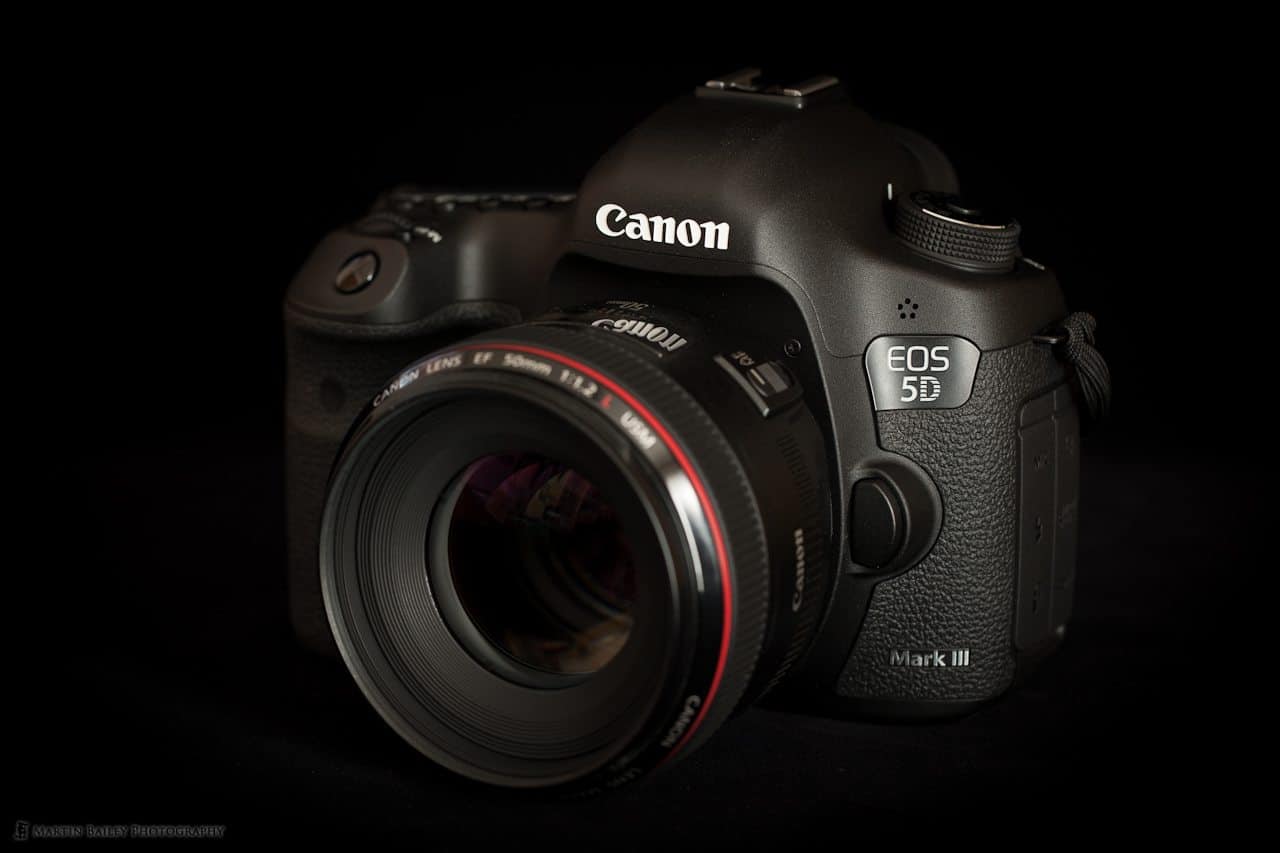
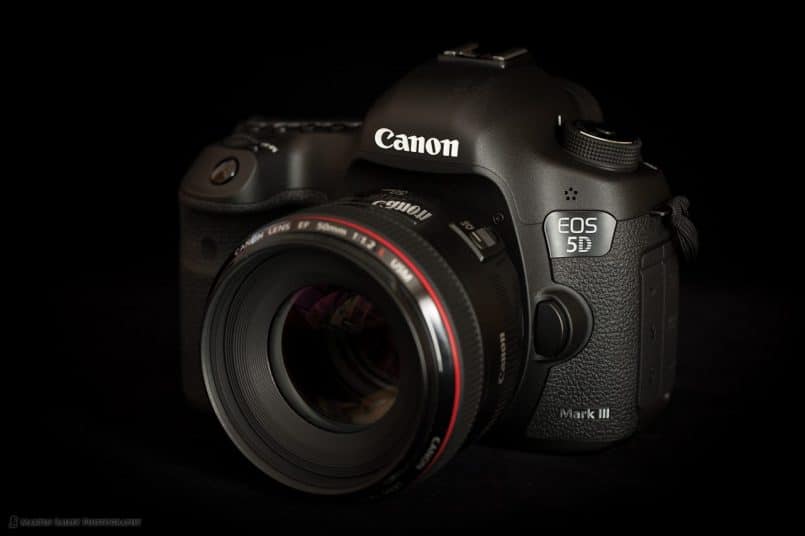

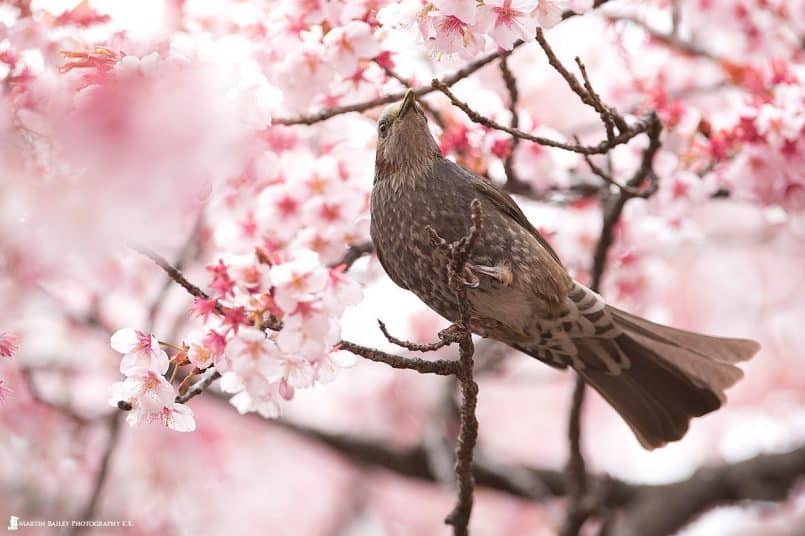
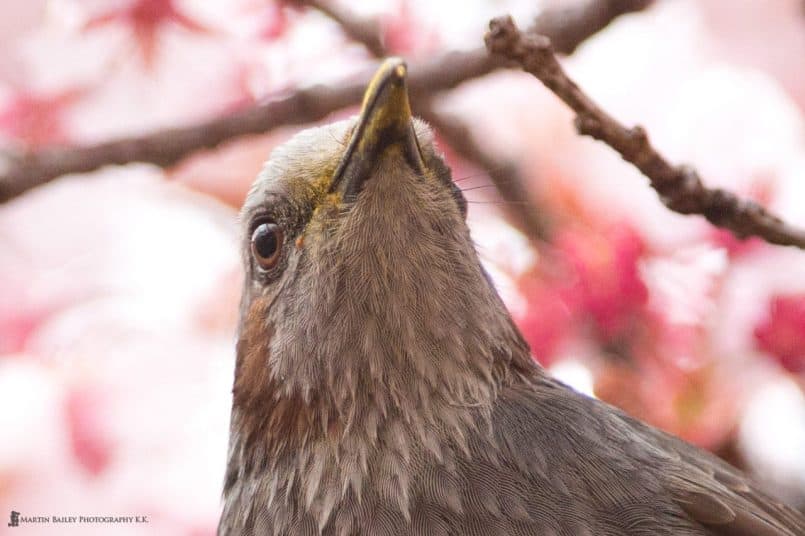
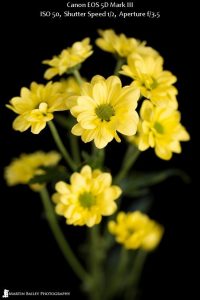
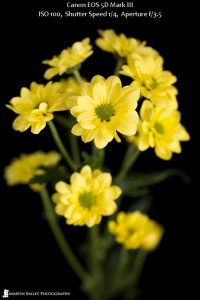

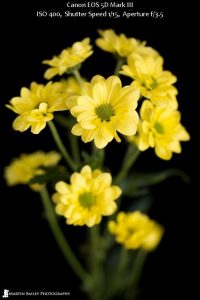
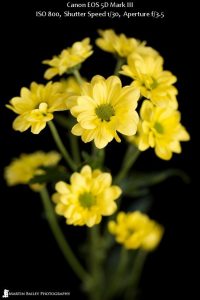
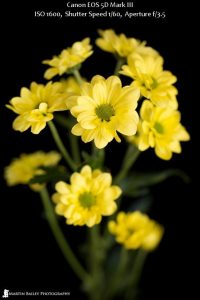
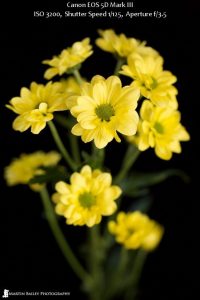
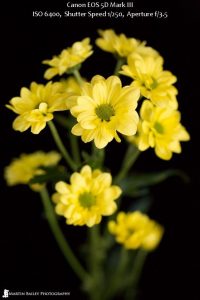
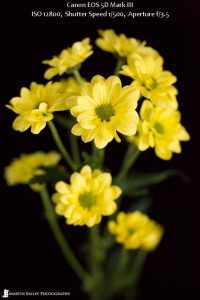
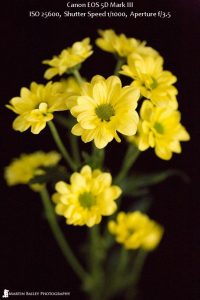
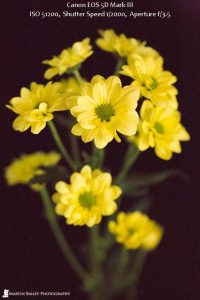
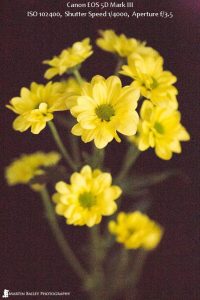
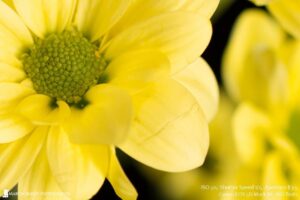
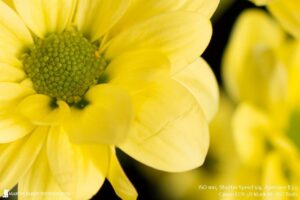
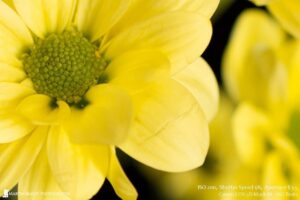
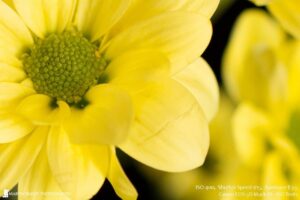
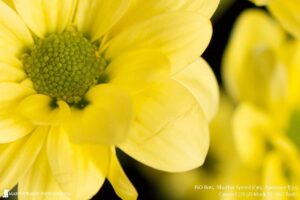

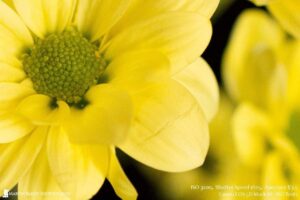
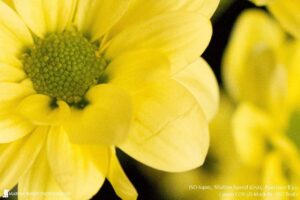
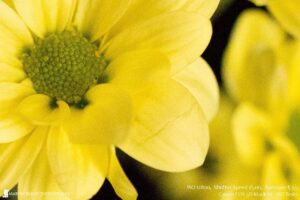
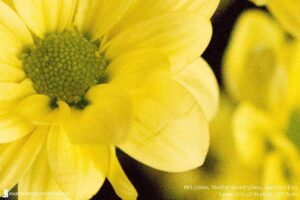
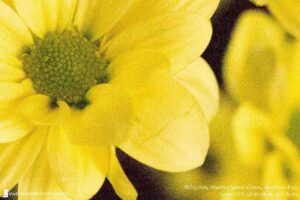
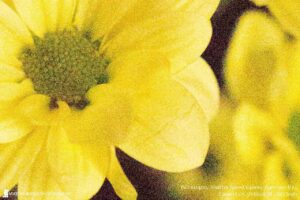

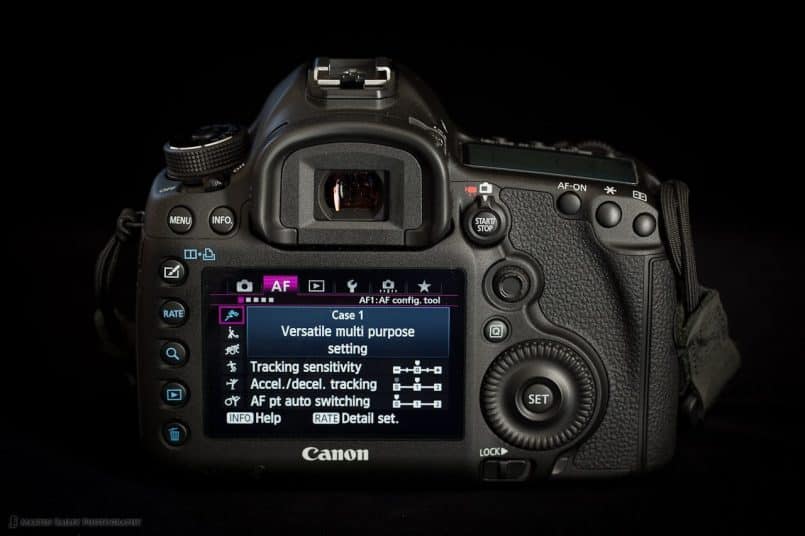
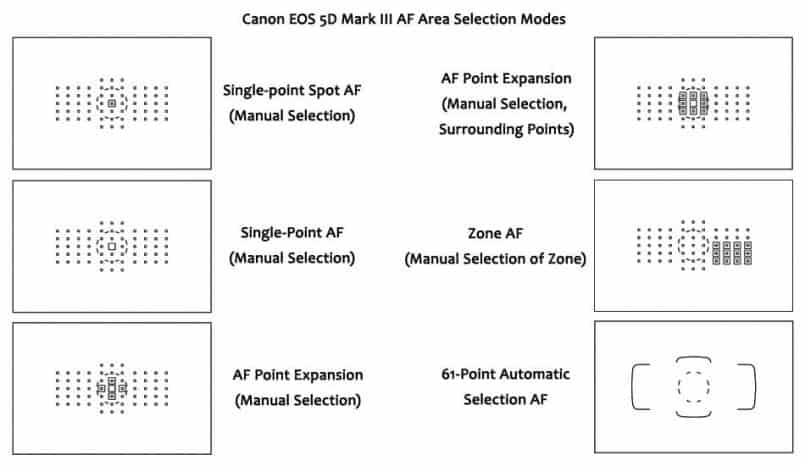
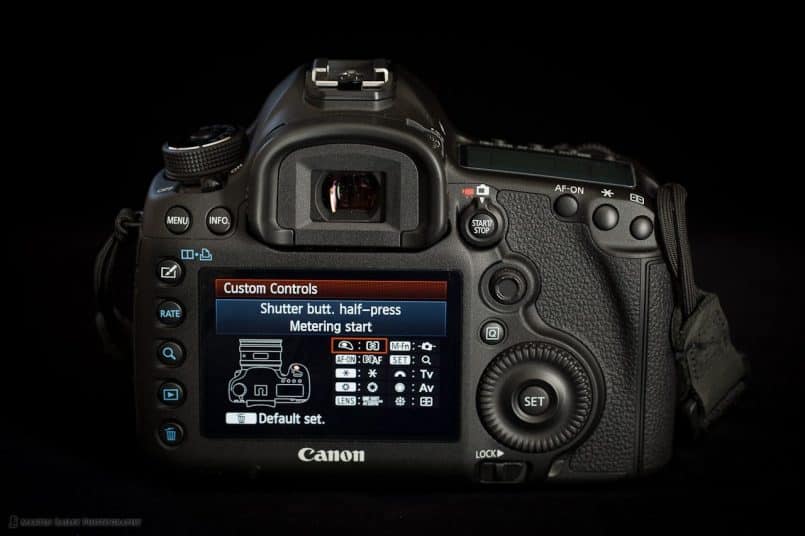

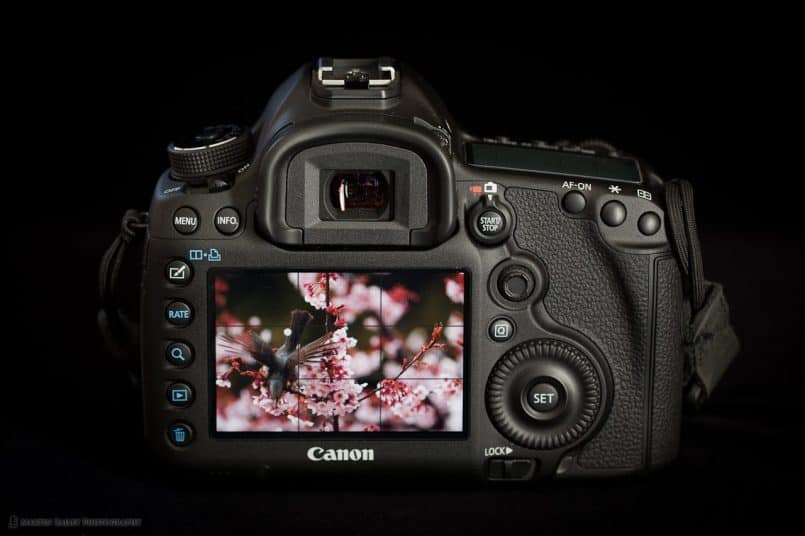

Thanks for this excellent review Martin. It’s a shame about the autofocus at F/8.0, this is something Canon need to address on cameras in this price bracket.
Thanks Chris! I too hope that something is done about that f/8 focusing issue.
Martin,
Thanks for the great review of the Canon 5DIII. I am looking forward to mine, due to arrive this Monday.
Also, I do enjoy your work very much. It is very well done.
Just a minor correction to your review; I think you meant “higher” signal to noise ratio, not “lower”.
Cheers!
Kevin
“…and larger 6.25 µm (micrometer) pixels which means a lower signal to noise ratio…”
Hi Kevin,
You’re very welcome, and thanks for pointing that out! I actually was thinking “Improved” when I wrote the manuscript, but as you can see, this confuses me. Of course it should be higher, i.e. more signal to noise. I personally wish this was “noise to signal”, so I could say higher! Higher seems better to me than lower. 🙂
Cheers,
Martin.
I actually just updated the audio too. I don’t often update the audio, but I think that one was bad enough to warrant it.
Thanks again for pointing out that slip Kevin!
Martin.
Thanks for the podcast and images. It does come across that the upgrades this time round,provides the photographer with additions of a more serious nature than has been handed down in the past from the pro level cameras.I hope this becomes a trend rather than a one off move.
I agree Julian. This does seem to be a new direction, and I like it.
Very nice review, Martin. It is easily the best I’ve read with great explanations and sample images that are based on RAW captures rather than JPGs. I appreciate the work you put into this.
I found your explanation of the focus modes particularly useful. I don’t know why but my eyes glaze over reading the Canon manual so it was nice having the information translated into something more readable!
You talked briefly about the HDR mode. In-camera HDRs don’t excite me too much but the thing that really interests me about this feature—assuming that it works as advertised—is that it can analyze a scene and automatically determine the correct exposure increment between the different shots in order to capture the entire DR of a scene. I can then create an HDR from the saved RAW images back on my workstation.
You’ve got me pumped up to get out and shoot with a 5D Mark III! Fortunately, mine arrives tomorrow. 😀
Thanks Tim! I’m pleased you found this useful.
I was actually asked once to help proof read the English versions of the Canon Manuals. I had to turn down the offer because I was too busy at the time, and I don’t really like that sort of work, but it would have been nice to clean them up a little, for the sake of the photography community. 🙂
I’m actually the reverse when it comes to HDR. I think I’ll do more now that I can do it in camera. I’m not one for spending much time working on things like that in post, but if the camera would just spits out something useable, I might just use it. I also agree that it’s great that we have the original RAW files too, so that we can re-cook it ourselves if necessary.
By the way, the Auto mode when shooting HDR does do exactly what it says on the box. I hadn’t tried it yet, but I just shot an image half of inside my studio, and the other half outside. The dark inside was automatically calculated and shot at 1/50, the half-way point was 1/400 and the outside was 1/3200. It automatically calculated that I needed a three stop bracket!
Enjoy your 5D Mark III Tim! I know you’re going to love it!
Martin.
I just want to say thanks for such a detailed and informative review of the new Canon 5D Mark III (mine is scheduled to be shipped tomorrow). Your review is by far the most thorough I have read anywhere.
I was so impressed with your review that I started watching your podcast on the 2012 Snow Monkey & Hokkaido.
Thanks again for all the time you put into the review.
Alan
Hi Martin. Thanks for continuing to share your journey.
I’m a D700 shooter and must admit the new Mk III has me thinking about switching. In any case after listening to your podcast I wanted to ask a focus related question.
Out of interest do how do you manage focus? Do you use a centre focus and then recompose or do you use a focus selection point? I wondered because you are shooting wildlife which can move very quickly yet you achieve such sharp focus so I am assuming the latter method?
Thanks
Daniel
Hi Daniel,
Thanks for stopping by.
How I focus really depends on the situation. For most of these recent bird shots, I used the Single Point Spot AF, which is the center AF point with a spot in it. The reason for that is because I was often focusing through holes in cherry blossom petals, and as you say, these guys move fast, so I just needed quick, accurate focussing, then recomposed.
When I can though, I select the focus point closest to the most important part of my subject, usually the eyes, and try not to recompose, because it can send the focus off if shooting wide open at relatively close distances. If the subject is far away though, the problem doesn’t really happen.
Also, for birds in flight I often use the center focus point, but in AI Servo mode. That way once you lock on your subject with the center AF point, the camera will move to any of the rest of the focus points as you recompose. This method is much more accurate than using all 61 AF points, as you can focus on the head, then recompose. If you use all 61 points, you might focus on a wing tip, and the head could be out of focus.
I hope that makes sense!
Cheers,
Martin.
Hi Martin,
Thanks for both the 5D mark III and 1D X reviews.
Have you had a chance to “shoot” flying birds now with 5D mark III, and can you comment that how good it is compared to 1D X?
Yours, Sakari
Hi Sakari,
I haven’t shot flying birds with the 5D Mark III, but it did extremely well with the birds in the blossom tree, and as the 61 point system is very similar to the 1D X, I don’t expect much if any difference. Of course, the 1D X has the RGB metering to help, so I can’t say for sure, but the 5D Mark III has been very good.
I’ll be updating folks via this blog and podcast as I get more experience with the 5D3, but it will probably be a few months out now, as the summer months in Japan are a bit dry for me bird-wise. Stay tuned though!
Cheers,
Martin.
Hello Martin-
Thank you for your in-depth reviews on canon’s most recent releases (1DX & 5DM3) I apologize if you have already answered this question, but what are your thoughts on image quality between the two bodies? From your reviews, it seemed as if the 5DM3 had a wow factor, where the 1DX did not pack as much of a punch.
Looking forward to hearing from you.
You’re welcome Sunny!
The 1D X and 5D Mark III images are very similar indeed, and there is certainly the same wow factor when viewing the image without magnification, but with 4 megapixels less, I can’t get over excited about the 1D X images. They’re great, don’t get me wrong, but the camera is built for speed and ruggedness over resolution. When image quality if the highest priority, and frame rate and weather conditions not an issue, I’ll reach for the 5D Mark III.
Cheers,
Martin.
Hi Martin-
Thanks for your feedback. Looks like I will most likely reach out to the 1DX. Mind sharing your thoughts re: the appropriate CF card brand you use with your 1DX?
Thanks again for your time and I really enjoy checking out your podcasts.
Avid fan!
Sunny
No problem Sunny!
I believe to get the best performance from the 1D X, you have to have UDMA 7 cards, so I bought the SanDisk 128GB CF card here: https://mbp.ac/sd128
I haven’t tried doing any scientific speed tests or anything, but I also use a 64GB SanDisk UDMA 6 card in the 1D X, and don’t really notice a drop in write speed.
Thanks for checking out the Podcasts too!
Cheers,
Martin.
Just got my mark III this week and I am delighted with it. The improved ISO and frames per second were what got me interested in upgrading from my mark II. I didn’t expect to find the autofocus to be so much improved but I am noticing improved accuracy and overall image quality in my insect shots right from the get go. Your review will help me get the hang of some of the more complicated functions. Thank you.
Hi Rachael,
I’m pleased the review helped, and that you are enjoying your new camera! It really is a beautiful machine!
Cheers,
Martin.
Hi Martin
I’m just about to upgrade from a 5D MkII to a 5D MkIII, largely on the strength of your excellent review. But … I’m totally confused by your comment that the MkIII won’t allow auto-focus at f8. Can you please elaborate?
Hi Ronnie,
This just means that when you use certain lenses with a 2X Extender, which increases the widest aperture by 2 stops, the aperture of say an f/4 lens becomes f/8, and when that happens, the lens will not autofocus. If you use a 2X Extender with an f/2.8 lens however, it only becomes f/5.6, and you maintain autofocus.
Hope this helps!
Martin.